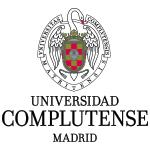Characterization of Some Bacterial Strains Isolated from Animal Clinical Materials and Identified as Corynebacterium xerosis by Molecular Biological Techniques
Investigación publicada en Journal of Clinical Microbiology
1 de septiembre de 2010
Eighteen C. xerosis strains isolated from different animal clinical specimens were subjected to phenotypic and molecular genetic studies. On the basis of the results of the biochemical characterization, the strains were tentatively identified as C. xerosis. Phylogenetic analysis based on comparative analysis of the sequences of 16S rRNA and rpoB genes revealed that the 18 strains were highly related to C. xerosis, C. amycolatum, C. freneyi and C. hansenii. There was a good concordance between 16S rRNA and partial rpoB gene sequencing results, although partial rpoB gene sequencing allowed a better differentiation of C. xerosis. Alternatively, C. xerosis was also differentiated from C. freneyi and C. amycolatum by RFLP analysis of the 16S-23S rDNA intragenic gene. Phenotypic characterization indicated that besides acid production from D-turanose and 5-keto-gluconate, 90% of the strains were able to reduce nitrate. The absence of the fatty acids C14:0, C15:0, C16:1varpi7c and C17:1varpi8c can also facilitate the identification of C. xerosis from its close related species.The results of the present investigation demonstrated that for reliable identification of C. xerosis strains from clinical samples a combination of phenotypic and molecular-based identification techniques is necessary
Palacios L., Vela AI., Molin K., Fernandez A., Latre MV., Chacon G., Falsen E. y Fernandez-Garayzabal JF..
 | Servicio de Identificación y Caracterización Microbiana (ICM). Centro de Vigilancia Sanitaria Veterinaria (VISAVET). Universidad Complutense (UCM). |
 | Departamento de Sanidad Animal. Facultad de Veterinaria. Universidad Complutense (UCM). |
| Departamento de Patología Animal. Facultad de Veterinaria. Universidad de Zaragoza (UNIZAR). | |
| Laboratorio Exopol. | |
| Department of Clinical Bacteriology. University of Gothenburg. | |

